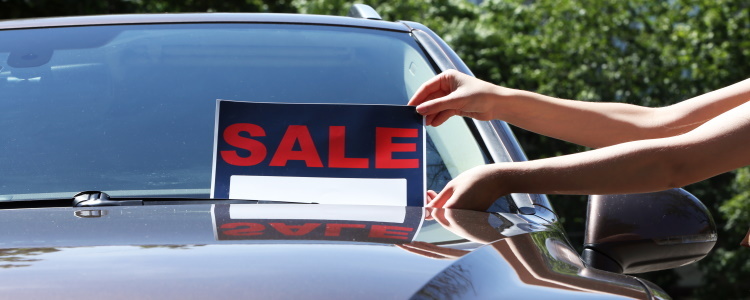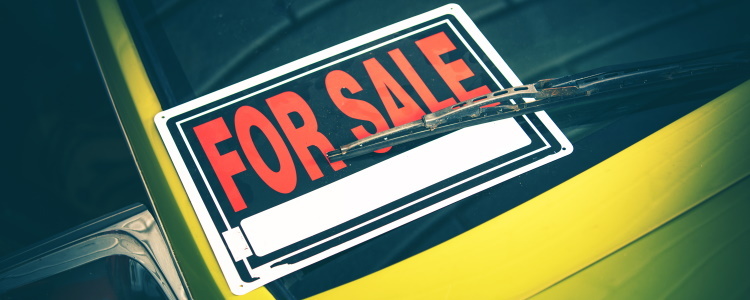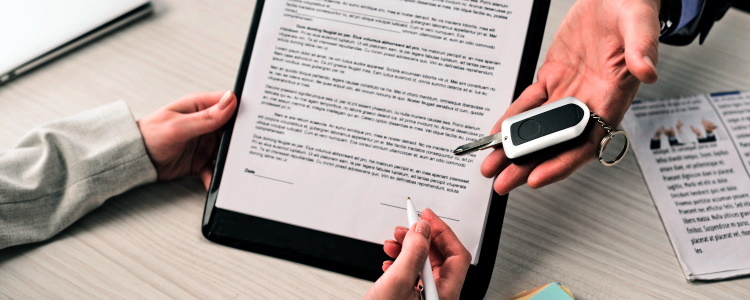What happens when you need another car but haven't finished paying for the one you have? This is a common scenario, and there are a few options you have when it comes to trading in a vehicle with a lien on the title.
Can I Trade In a Car I Still Owe On?
 Yes, you can certainly trade in a car that you still owe money on! But, this doesn't erase your obligation to finish paying your lender.
Yes, you can certainly trade in a car that you still owe money on! But, this doesn't erase your obligation to finish paying your lender.
When you get an auto loan, both you and your lender must sign the title. You're signing as the primary borrower, but your lender signs as the lienholder. This entitles them to the first stake in your vehicle – you don't actually own the car until you finish paying your lender and their name is removed from the title.
A vehicle isn't able to be sold to someone else until your lender is removed from the title. If you have the money to pay off your loan outright, you should do so before you attempt to trade in the car. But, no matter how you do it, your current loan has to be paid off.
In a case where you need to get out of your current vehicle early, you have to pay off your lender in one way or another. However, there are a few options for how you can achieve this:
- Pay your lender out of pocket
- Pay your current lender with trade-in equity from the car
- Pay with a combination of cash and equity
- Roll your payoff amount into your next loan
Equity and Your Trade-In
Having equity means that the vehicle is worth more than you owe on the loan. If this is the case, you can trade in to a dealership and use the money from the car to remove the lien, and either pocket any extra money or use it as a down payment on your next vehicle.
If your car is worth less than you owe on the loan, this is called having negative equity or being underwater on your loan. In this case, you can still sell your vehicle to a dealer, but you have to add cash to the amount you're given by them in order to make the payoff amount.
Rolling Over Your Current Loan
If you're in a negative equity position and can't afford to add to the money you get for the car, you've got two options left: rollover your negative equity, or wait it out. Rolling over is common, but it may do more harm than good in the long run if you're a bad credit borrower.
When you roll over negative equity, the dealership takes care of paying off your existing loan, and the difference between what your trade-in is worth and your loan balance is added to the amount of your new loan. This means you're able to get into another vehicle, but you're paying for it and your last loan at the same time. Since your initial loan amount increases by the amount of negative equity, you end up paying more in interest charges.
This means starting off with more negative equity for this new loan. If you have to go through this process again, you risk getting further behind, and getting stuck in a negative equity cycle. This is called being on the trade-in treadmill, and it's not where you want to be.
Your last option for trading in a car with a lien on the title is to simply not do it. Well, not yet, anyway. If you find yourself in a negative equity position, work on getting enough of your current loan paid to get equity rather than trading in. Once your current vehicle is worth as much as or more than what you owe on it, you're likely to have an easier time with your trade-in process.
Ready to Take the Next Step?
If you're ready to make a trade, whether you owe on your car or not, Drivers Lane is here to help. We want to connect you to a local dealer that has the subprime lending options you need if you're struggling to get an auto loan. These dealerships have lenders available that can assist people in many kinds of credit situations.
Take the first step toward your next loan today by filling out our fast, free, and no-obligation car loan request form.



















